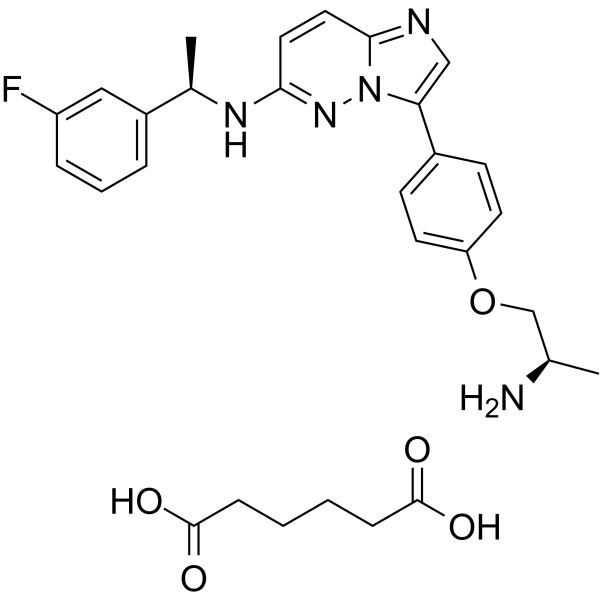ROS
ROS is a proto-oncogenic receptor tyrosine kinase whose expression is tightly restricted during development. ROS kinase is one of the last two remaining orphan receptor tyrosine kinases. It is thought also that c-ROS gene may have a role in some cardiovascular diseases, and the fact that homozygous male mice targeted against c-ROS gene are healthy but infertile, has inspired researchers to think about ROS inhibition as a method for development of new male contraceptives. The new selective and potent inhibitors for ROS kinase, along with the development of new specific diagnostic methods for the detection of ROS fusion proteins, raises the importance of using these selective inhibitors for targeting ROS mutations as a new method for treatment of cancers harboring such genes.
Ziele für ROS
Produkte für ROS
- Bestell-Nr. Artikelname Informationen
-
GC41183
α-Carotene
α-Carotin, eine Vorstufe von Vitamin A, wird als antimetastatisches Mittel oder als Adjuvans fÜr Krebsmedikamente verwendet. α-Carotin wird aus gelb-orangen und dunkelgrÜnen GemÜsen isoliert.

-
GC25000
(E/Z)-BCI
(E/Z)-BCI (BCI, NSC 150117) is an inhibitor of dual specific phosphatase 1/6 (DUSP1/DUSP6) and mitogen-activated protein kinase with EC50 of 13.3 μM and 8.0 μM for DUSP6 and DUSP1 in cells, respectively. (E)-BCI induces apoptosis via generation of reactive oxygen species (ROS) and activation of intrinsic mitochondrial pathway in H1299 lung cancer cells.

-
GC13136
(S)-Crizotinib
(S)-Crizotinib ist ein potenter und selektiver MTH1 (mutT-Homolog)-Inhibitor mit einem IC50 von 330 nM. (S)-Crizotinib stÖrt die Nukleotidpool-HomÖostase durch MTH1-Hemmung, induziert eine Zunahme von DNA-EinzelstrangbrÜchen, aktiviert die DNA-Reparatur in menschlichen Kolonkarzinomzellen und unterdrÜckt effektiv das Tumorwachstum in Tiermodellen.
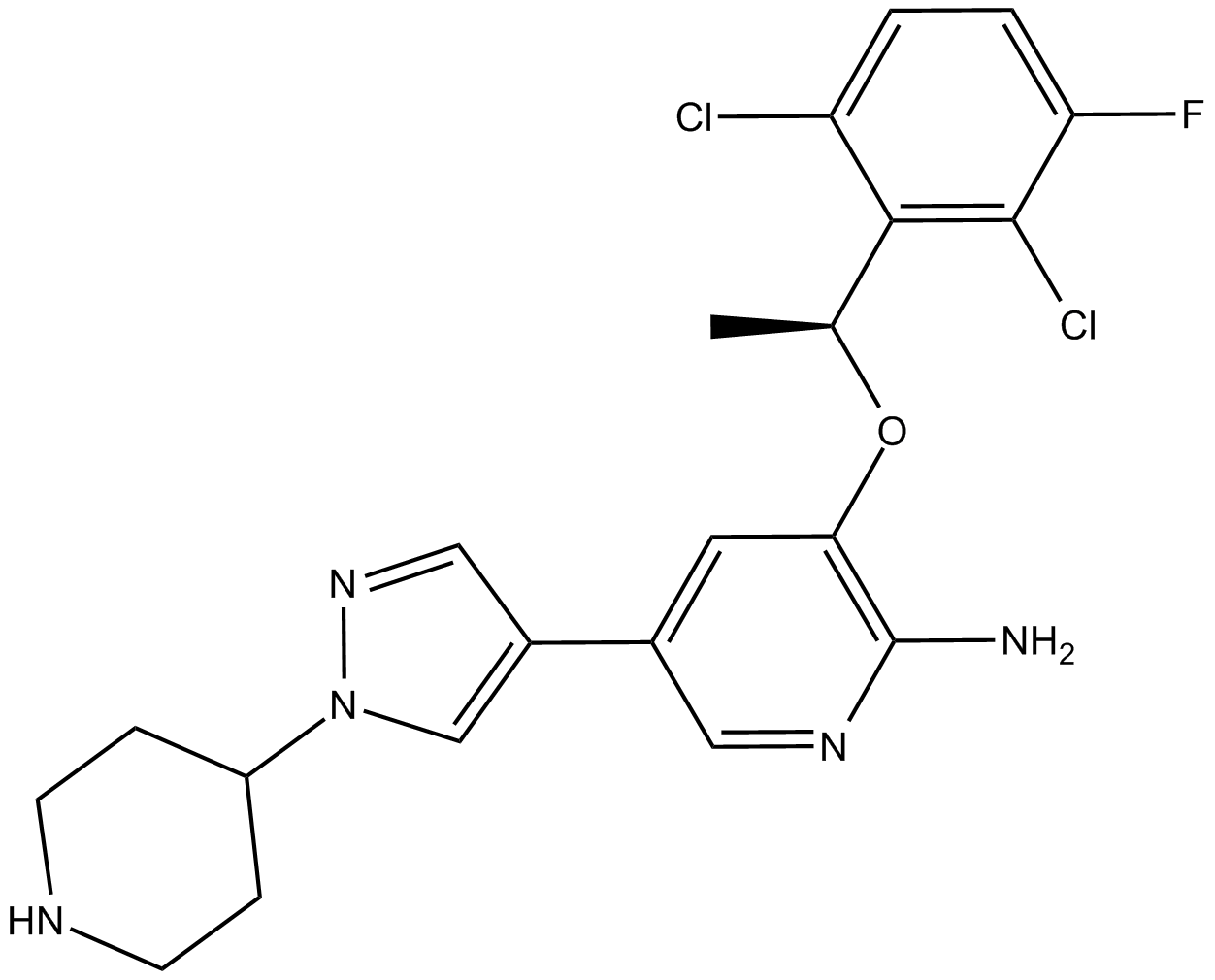
-
GC43268
Cinnamtannin B-1
Cinnamtannin B-1 ist ein Proanthocyanidin mit mehreren biologischen Funktionen, einschließlich antioxidativer Wirkungen und Hemmung der Produktion von reaktiven Sauerstoffspezies (ROS).

-
GC12616
Crizotinib hydrochloride
Crizotinib-Hydrochlorid (PF-02341066-Hydrochlorid) ist ein oral bioverfÜgbarer, selektiver und ATP-kompetitiver dualer ALK- und c-Met-Inhibitor mit IC50-Werten von 20 bzw. 8 nM. Crizotinib-Hydrochlorid (PF-02341066-Hydrochlorid) hemmt die Tyrosin-Phosphorylierung von NPM-ALK und die Tyrosin-Phosphorylierung von c-Met mit IC50-Werten von 24 bzw. 11 nM in zellbasierten Assays. Es ist auch ein ROS-Proto-Onkogen-1 (ROS1)-Inhibitor. Crizotinib-Hydrochlorid (PF-02341066-Hydrochlorid) hat eine wirksame Hemmung des Tumorwachstums.
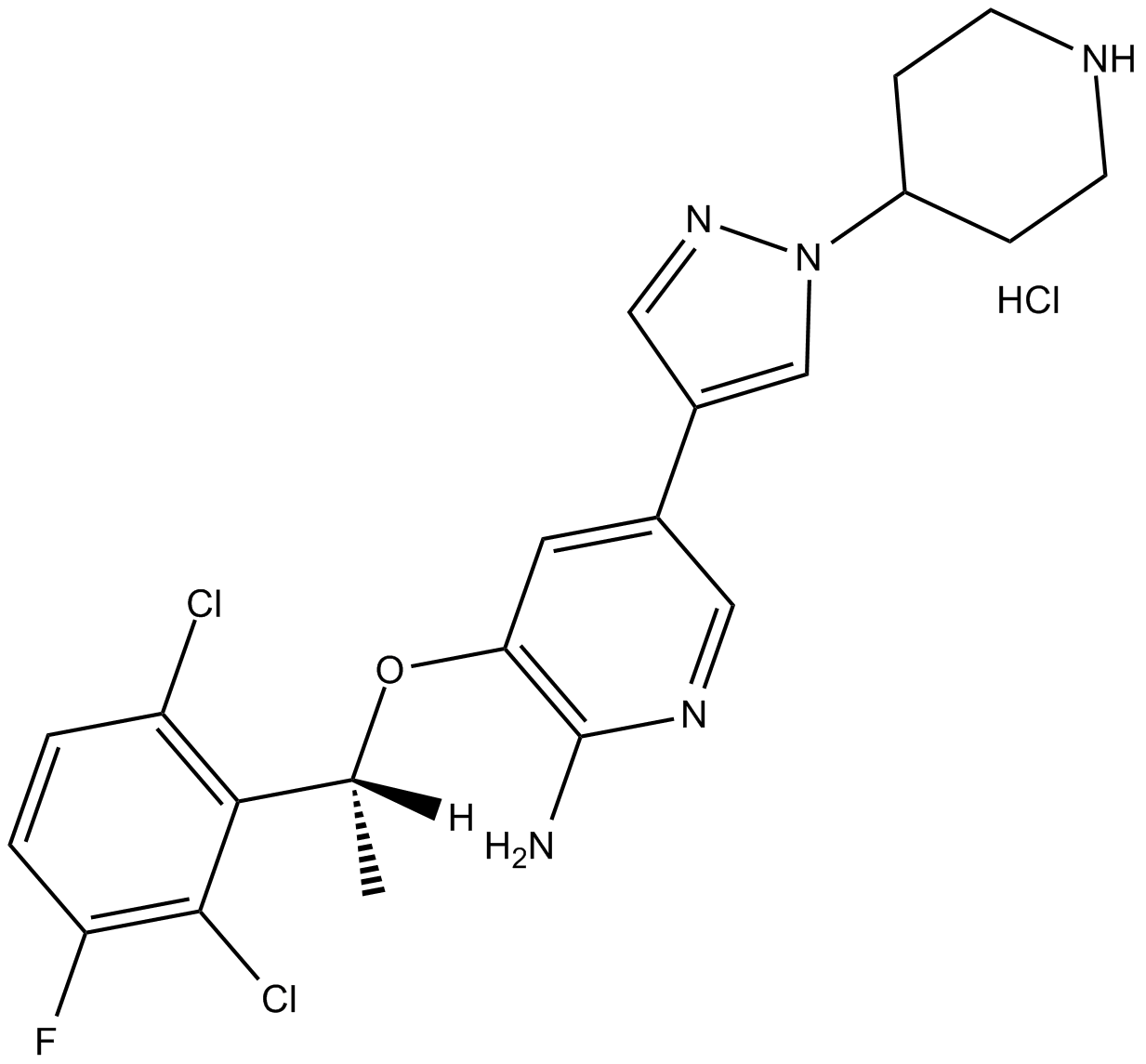
-
GC38776
Ensulizole
Ensulizol ist ein sulfonierter UV-Absorber und kann intensive UVB- und partielle UVA-Absorption.
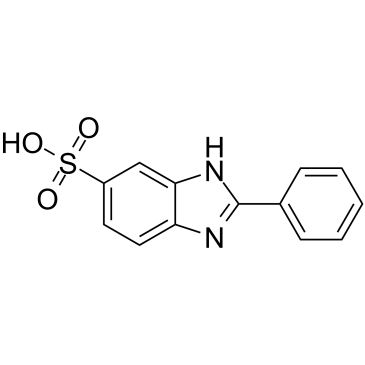
-
GC14476
Entrectinib
Entrectinib (NMS-E628) ist ein potenter, oral verfÜgbarer und ZNS-aktiver Pan-Trk-, ROS1- und ALK-Inhibitor. Entrectinib hemmt TrkA, TrkB, TrkC, ROS1 und ALK mit IC50-Werten von 1, 3, 5, 12 bzw. 7 nM. Antitumor-AktivitÄt.
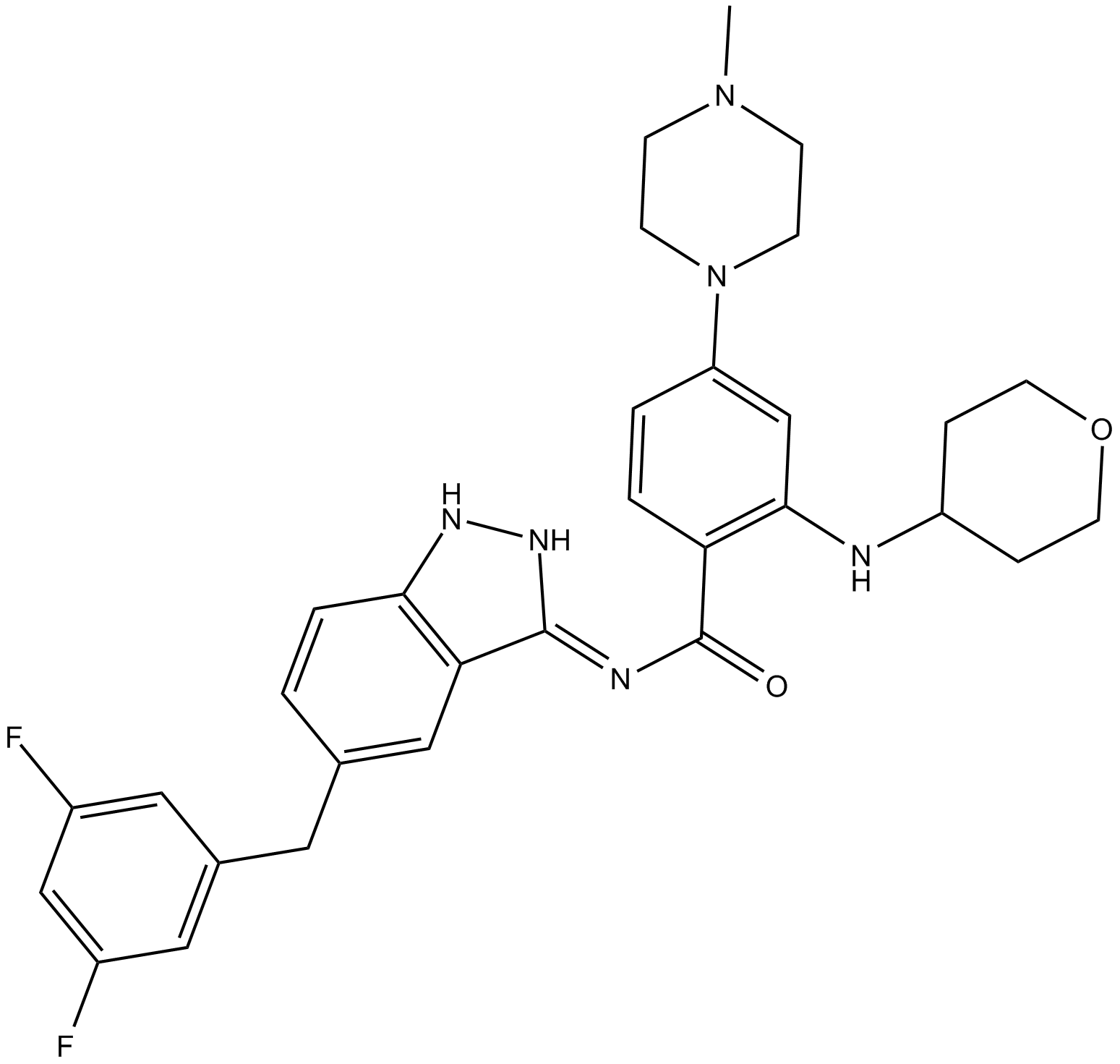
-
GC36021
F-1
F-1 ist ein potenter dualer ALK- und ROS1-Inhibitor, der Phospho-ALK und seine relativ nachgeschalteten Signalwege unterdrÜckt, mit IC50-Werten von 2,1 nM, 2,3 nM, 1,3 nM und 3,9 nM fÜr ALKWT, ROS1WT, ALKL1196M bzw. ALKG1202R.
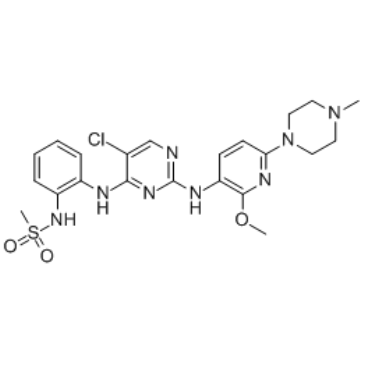
-
GC62633
GGTI-2154
GGTI-2154 ist ein potenter und selektiver Inhibitor der Geranylgeranyltransferase I (GGTase I) mit einer IC50 von 21 nM. GGTI-2154 zeigt eine mehr als 200-fache Selektivität für GGTase I gegenüber FTase (IC50=5600 nM). GGTI-2154 kann für die Krebsforschung verwendet werden.
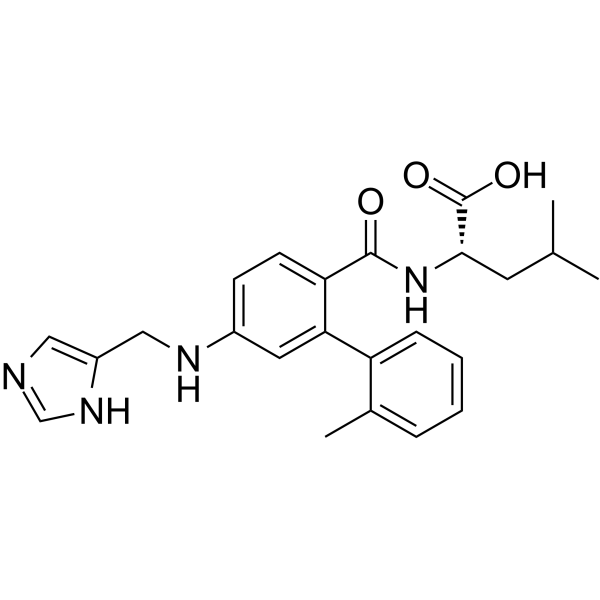
-
GC11057
LY2801653
A MET kinase inhibitor
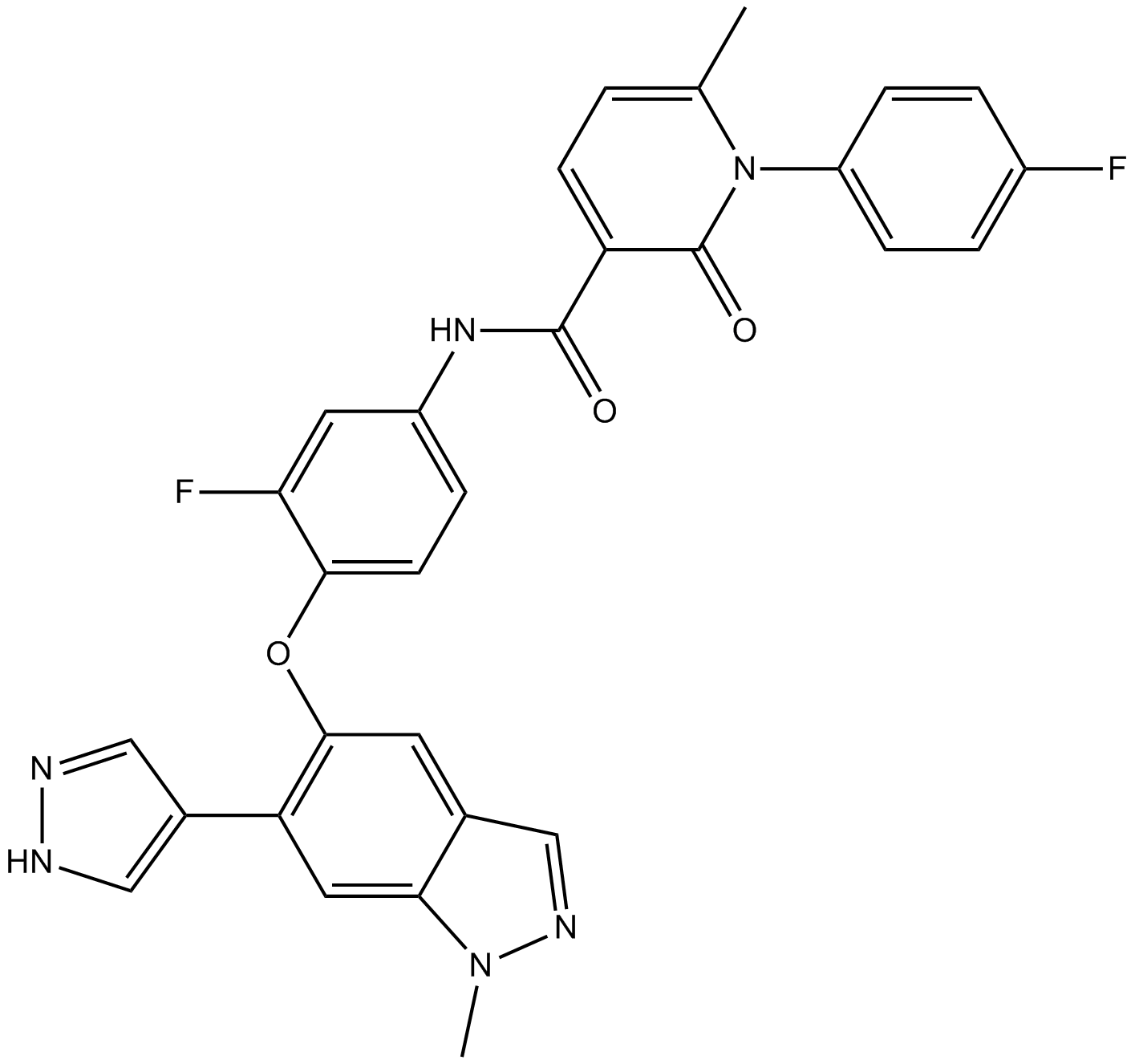
-
GC36585
Merestinib dihydrochloride
Merestinib-Dihydrochlorid (LY2801653-Dihydrochlorid) ist ein potenter, oral bioverfÜgbarer c-Met-Inhibitor (Ki=2 nM) mit Anti-Tumor-AktivitÄten. Merestinibdihydrochlorid hat auch eine starke AktivitÄt gegen MST1R (IC50 = 11 nM), FLT3 (IC50 = 7 nM), AXL (IC50 = 2 nM), MERTK (IC50 = 10 nM), TEK (IC50 = 63 nM), ROS1, DDR1 /2 (IC50=0,1/7 nM) und MKNK1/2 (IC50=7 nM).
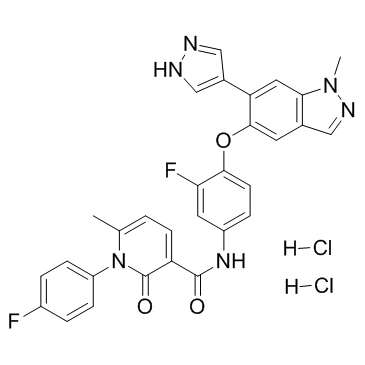
-
GC14794
PF-06463922
PF-06463922 (PF-06463922) ist ein selektiver, oral aktiver, in das Gehirn eindringender und ATP-kompetitiver ROS1/ALK-Inhibitor. PF-06463922 hat Kis von < 0,025 nM, < 0,07 nM und 0,7 nM fÜr ROS1, Wildtyp-ALK bzw. ALKL1196M. PF-06463922 hat AntikrebsaktivitÄt.
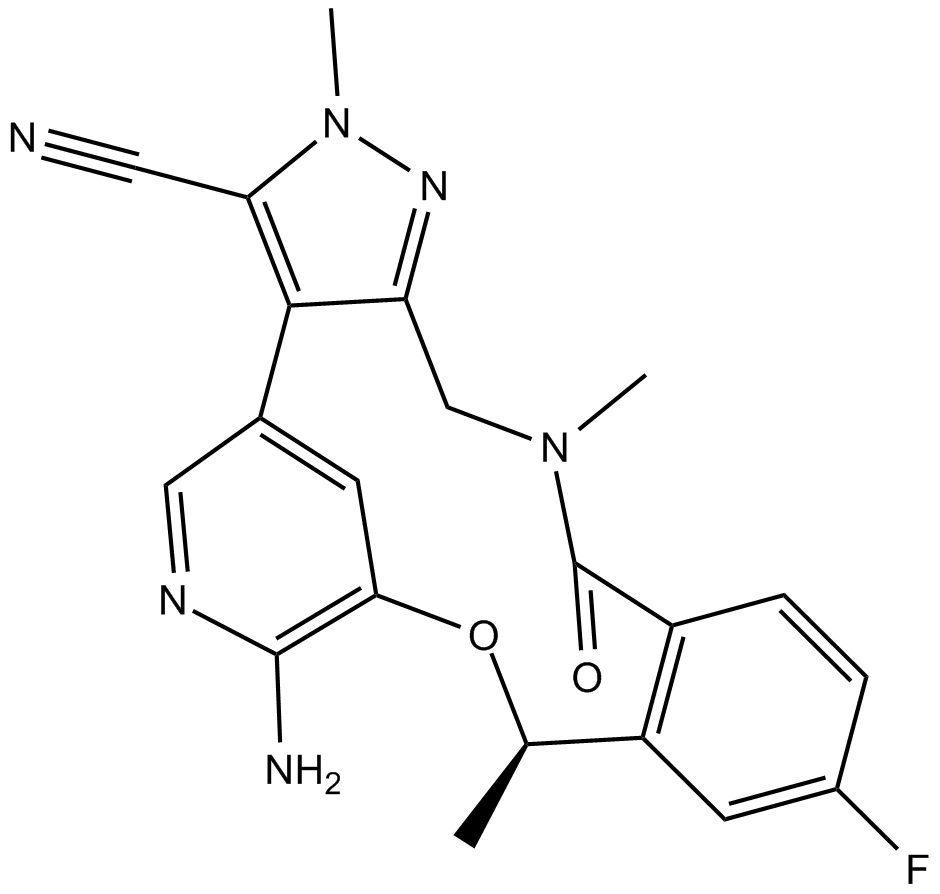
-
GC19362
Repotrectinib
Repotrectinib (TPX-0005) ist ein potenter ROS1- (IC50 = 0,07 nM) und TRK- (IC50 = 0,83/0,05/0,1 nM fÜr TRKA/B/C)-Inhibitor. Repotrectinib hemmt stark WT-ALK (IC50 = 1,01 nM). Repotrectinib hat eine Anti-Krebs-AktivitÄt.
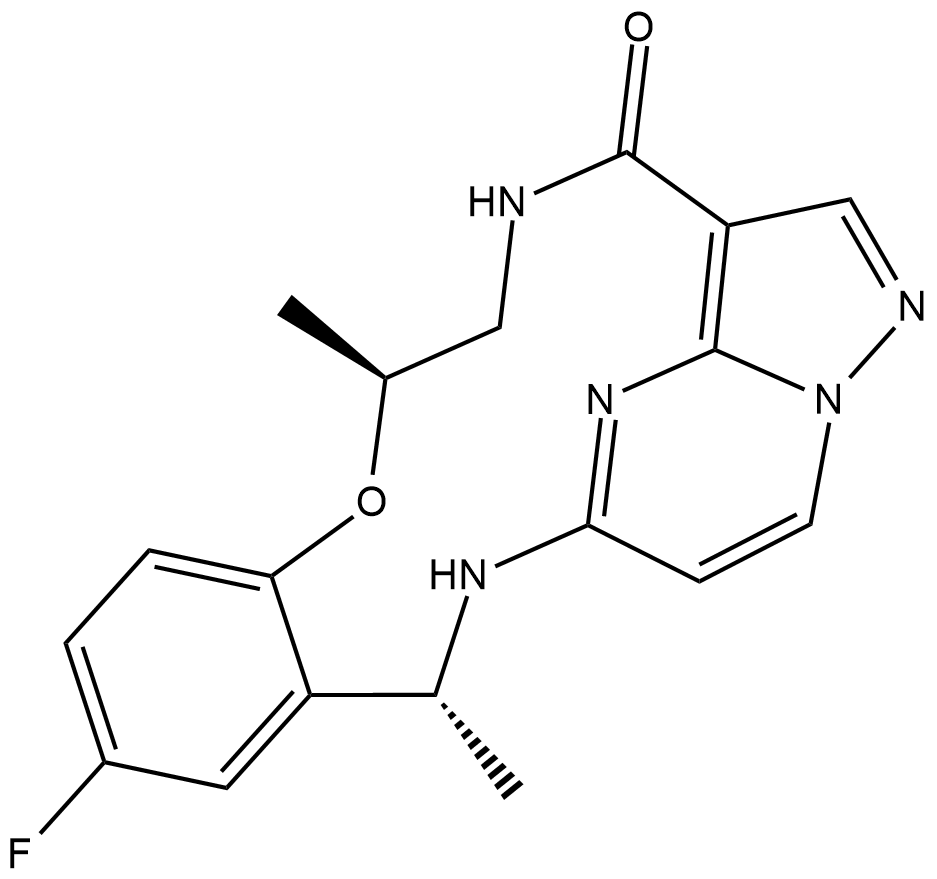
-
GC62351
Taletrectinib
Taletrectinib (DS-6051b) ist ein potenter, oral aktiver und selektiver ROS1/NTRK-Inhibitor der nÄchsten Generation. Taletrectinib hemmt rekombinantes ROS1, NTRK1, NTRK2 und NTRK3 mit IC50-Werten von 0,207, 0,622, 2,28 bzw. 0,98 nM. Taletrectinib hemmt auch ROS1 G2032R und andere Crizotinib-resistente ROS1-Mutanten.
